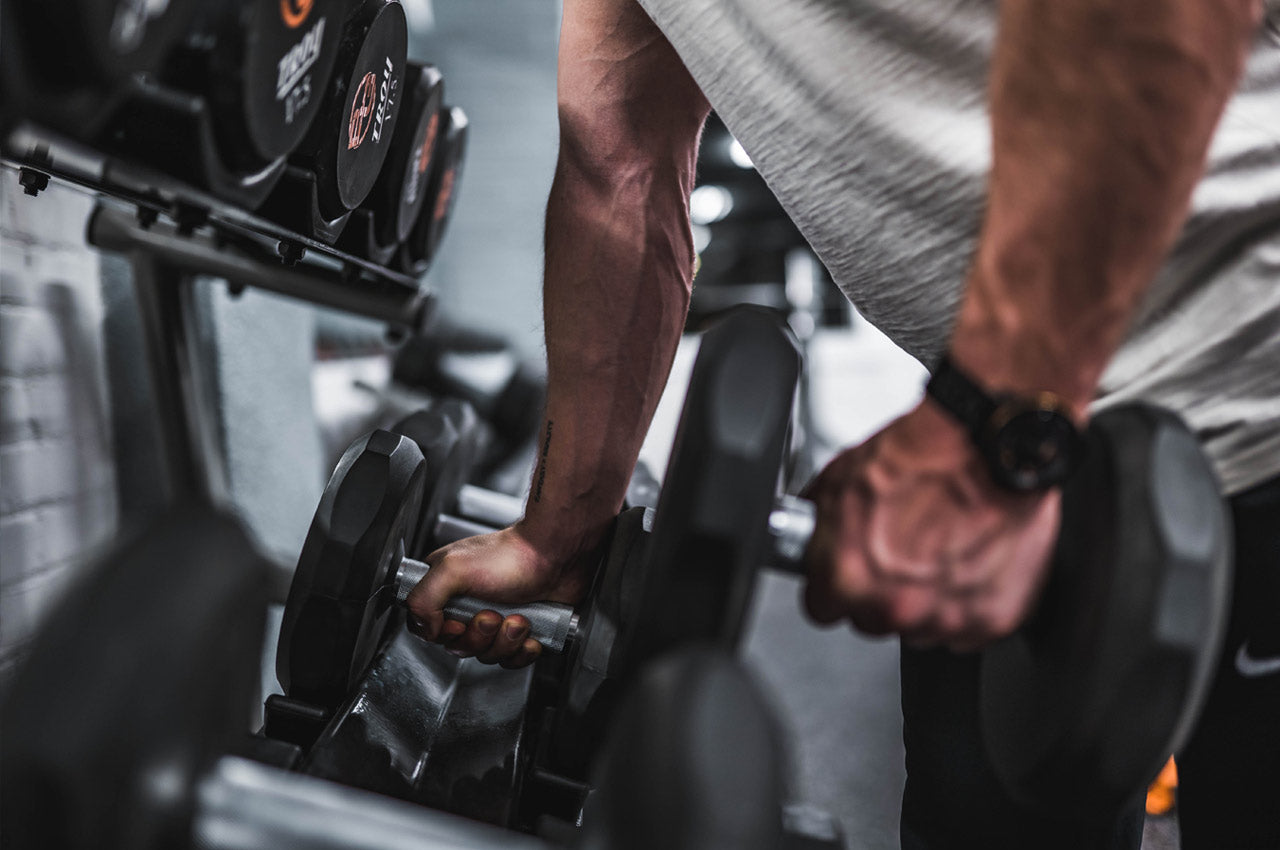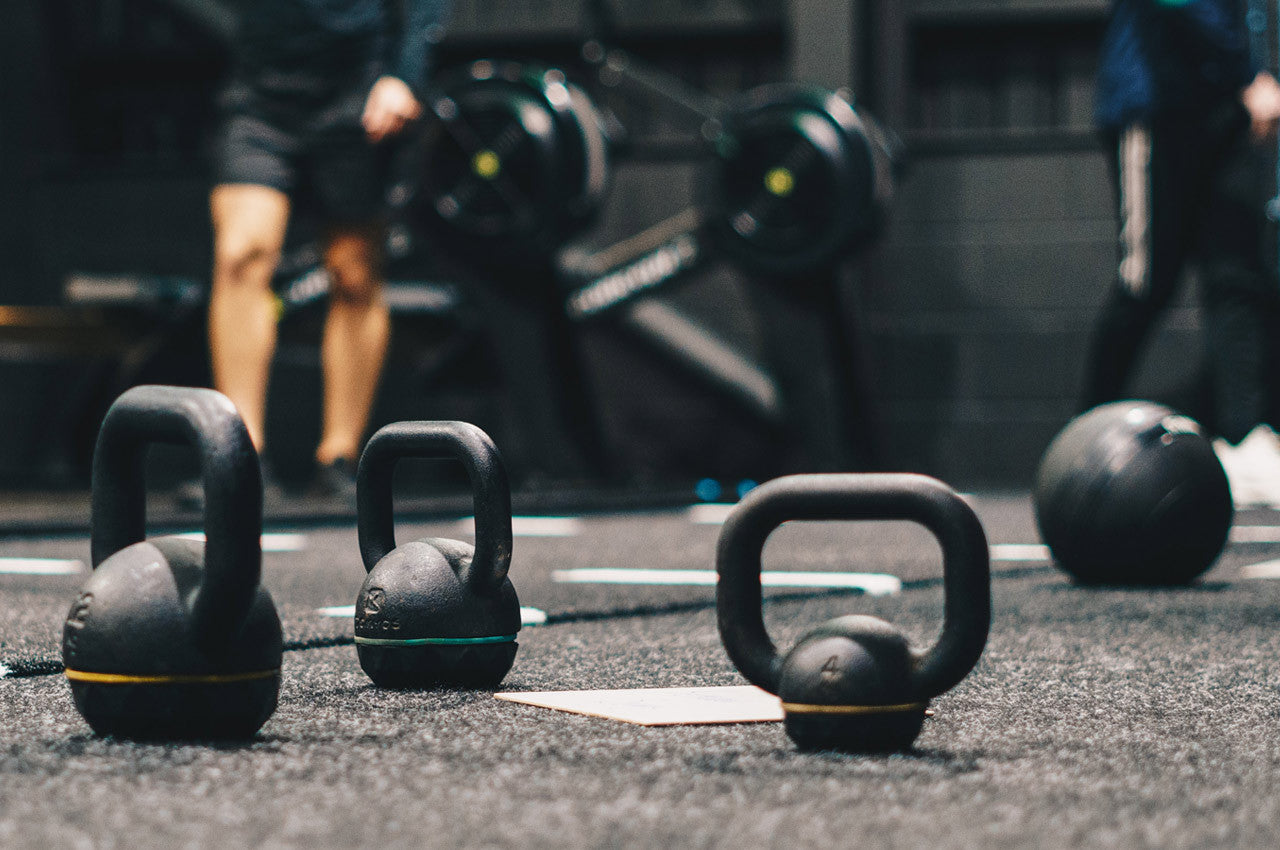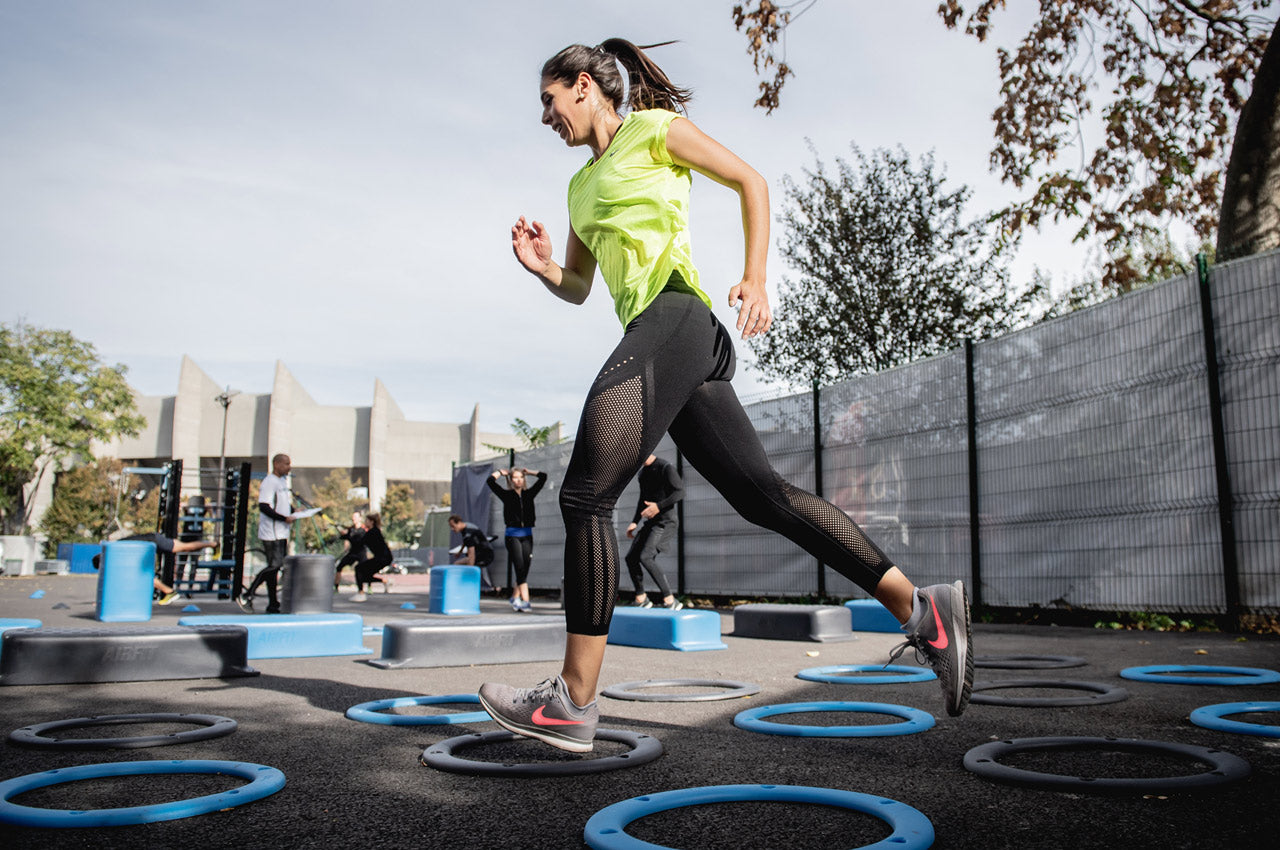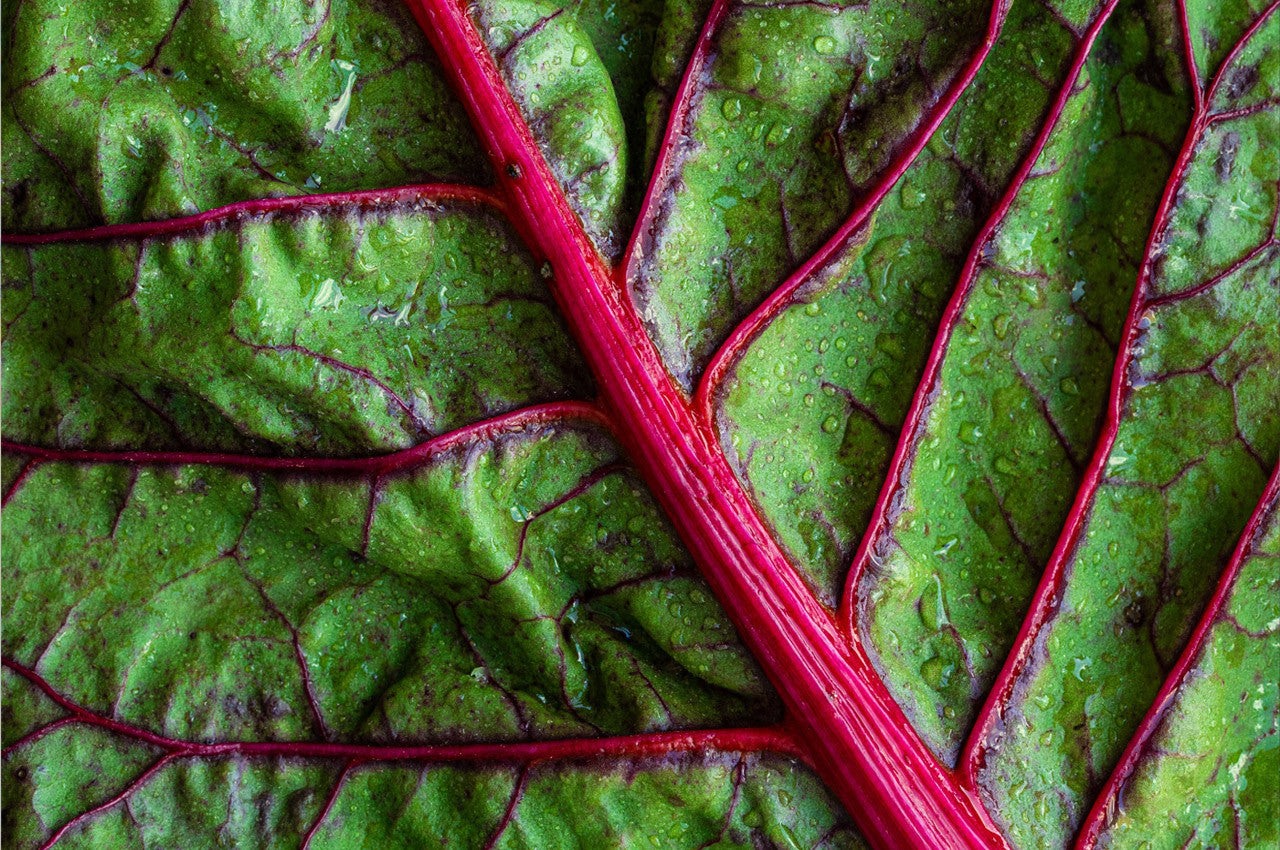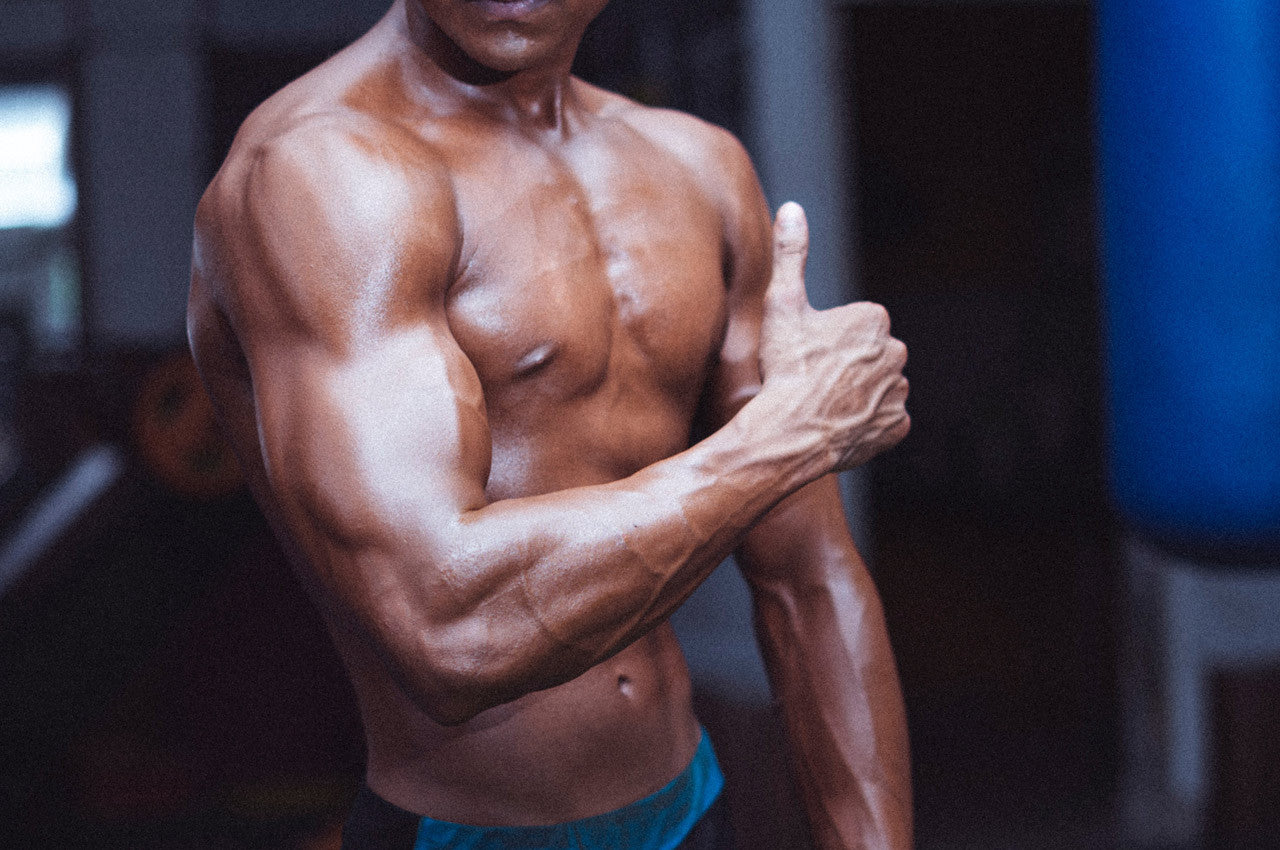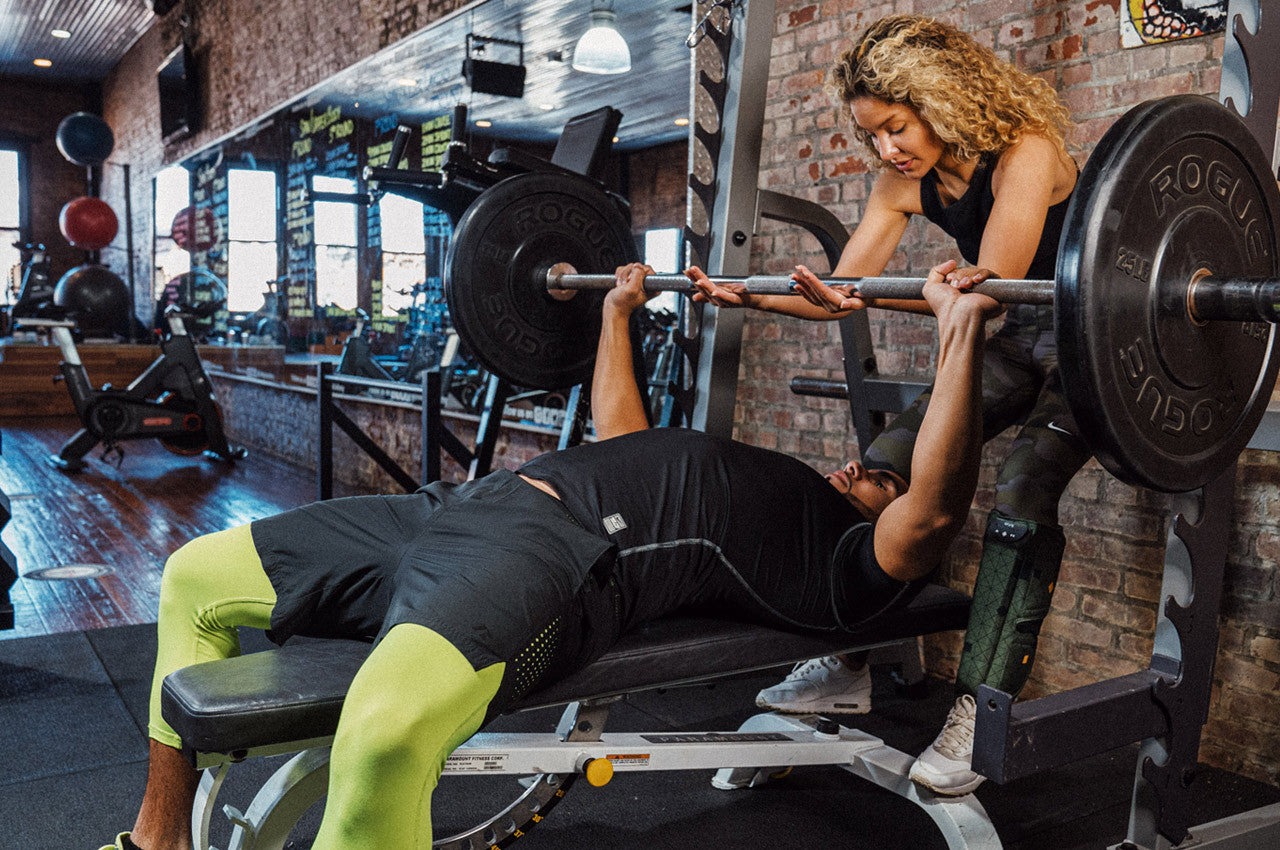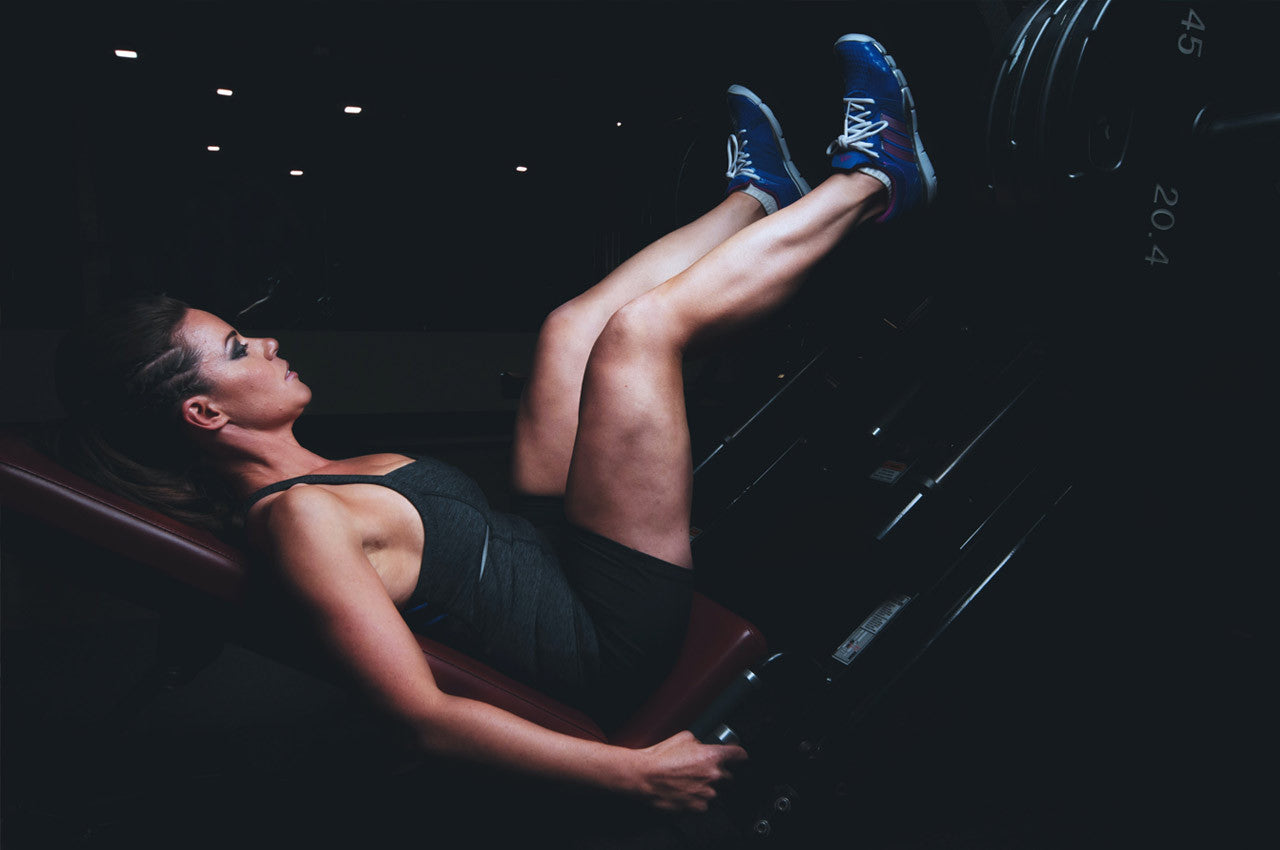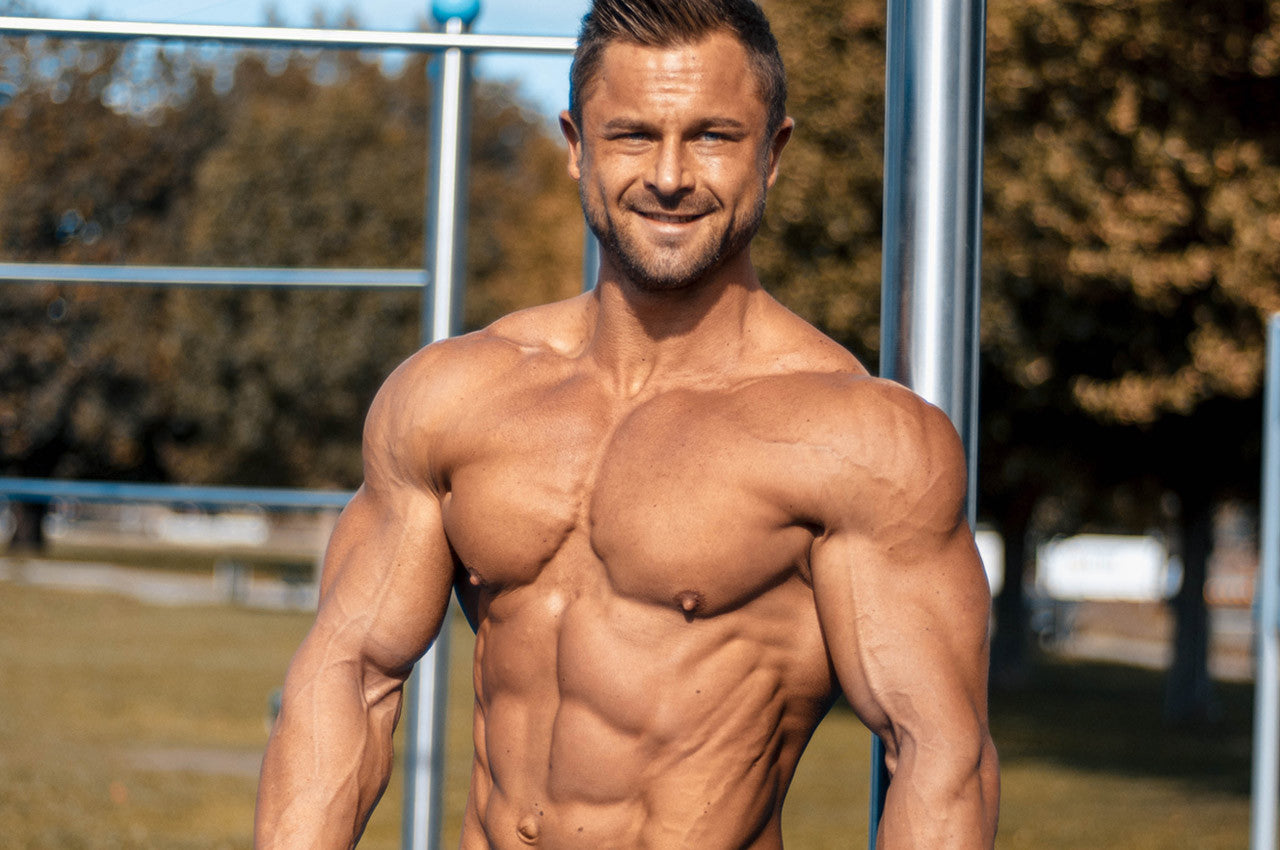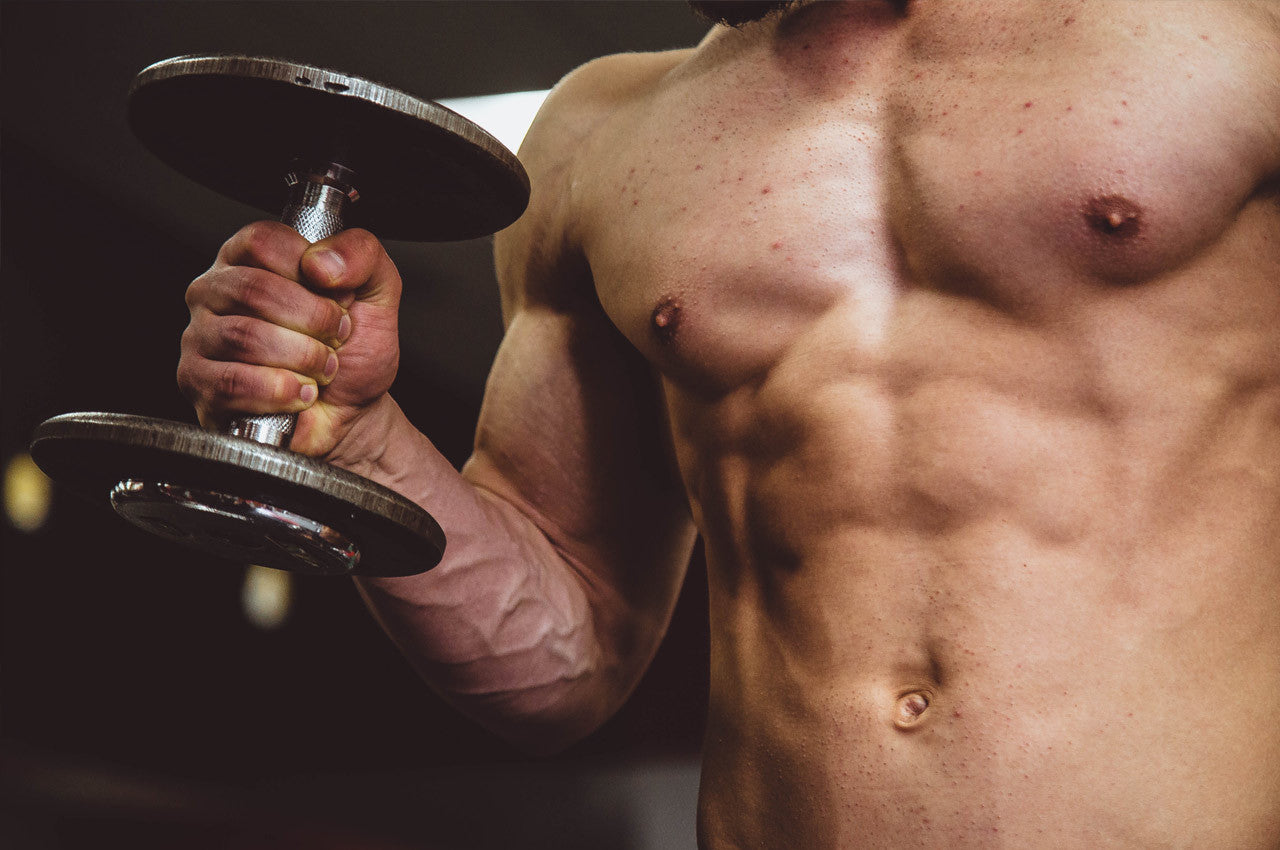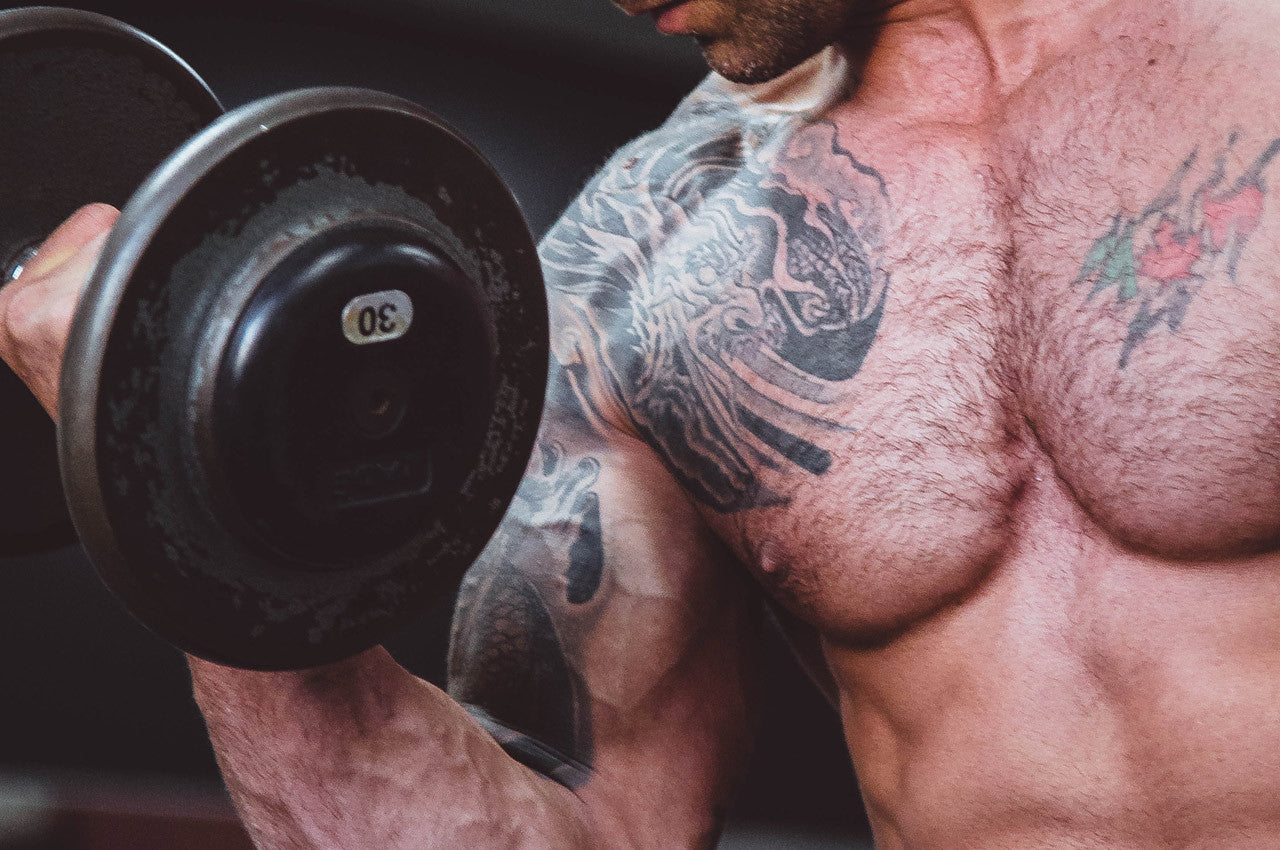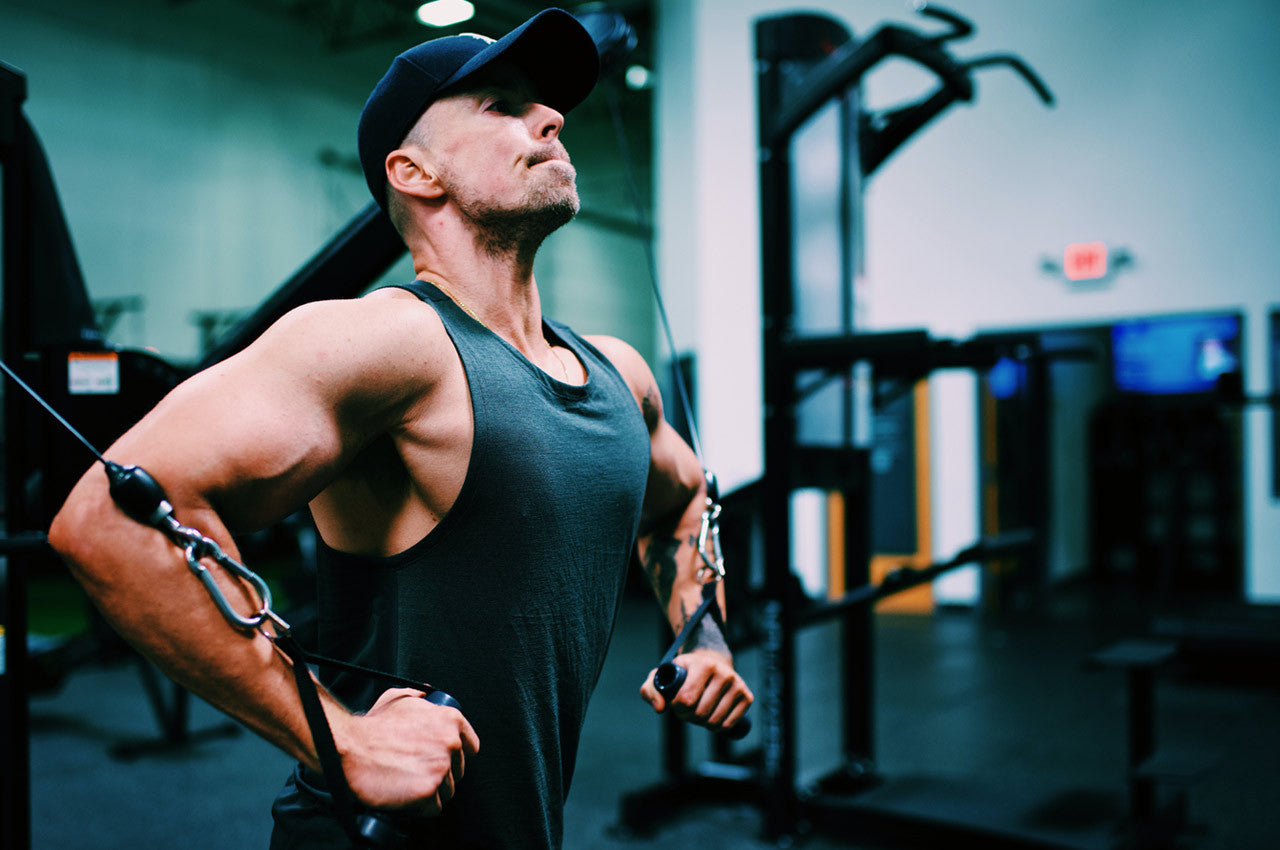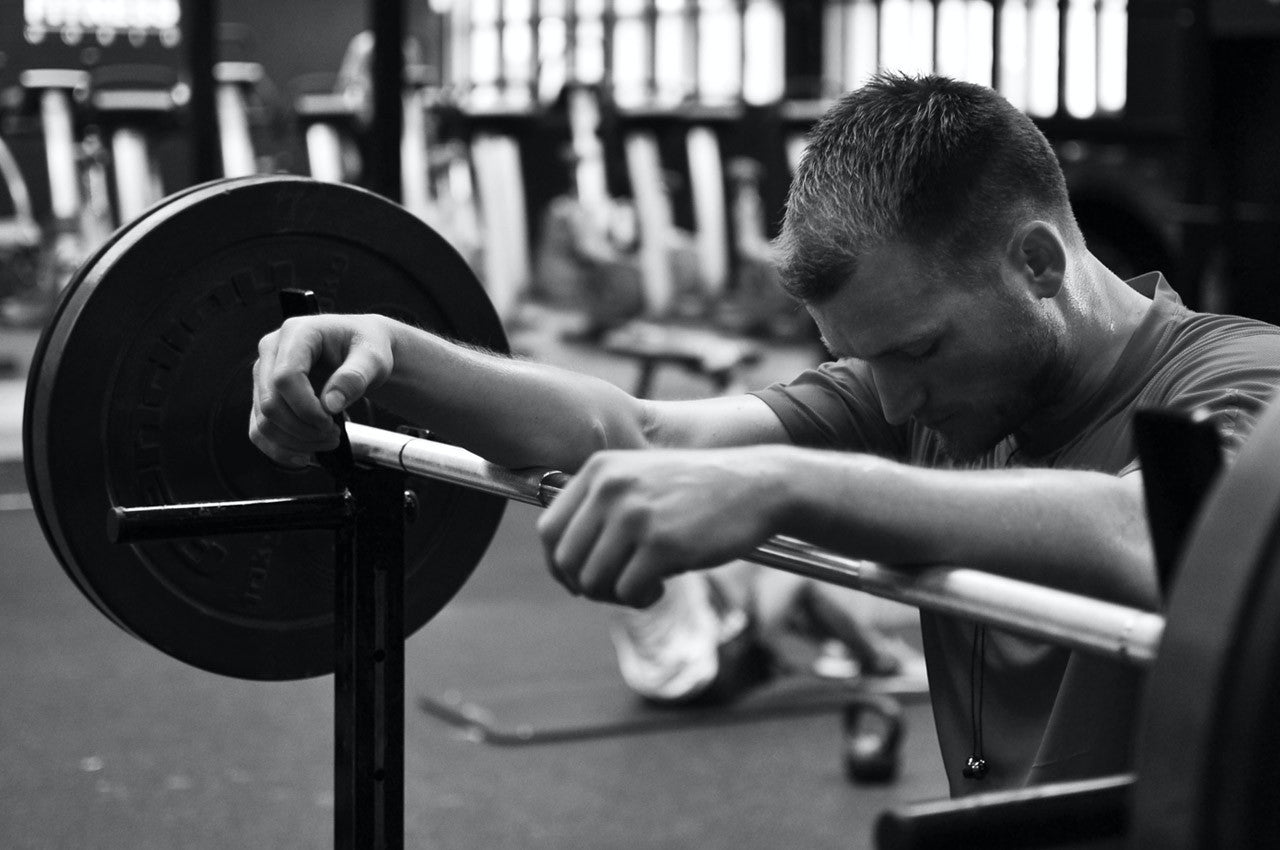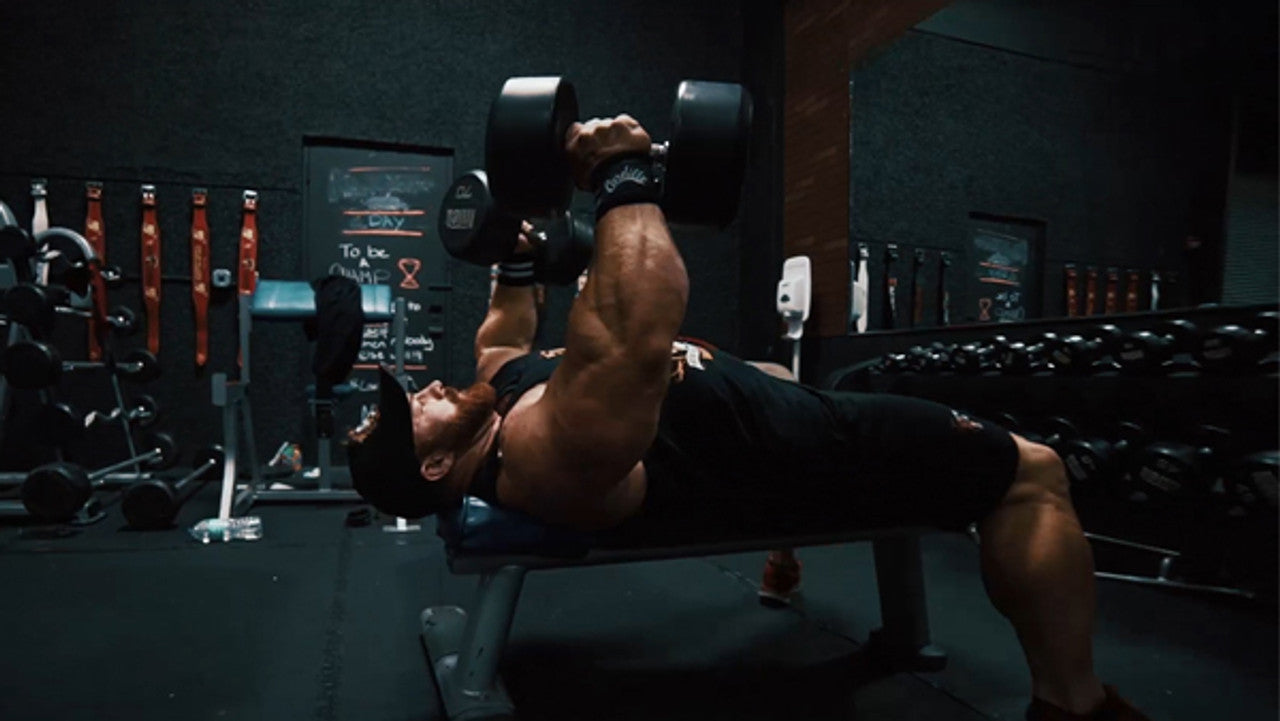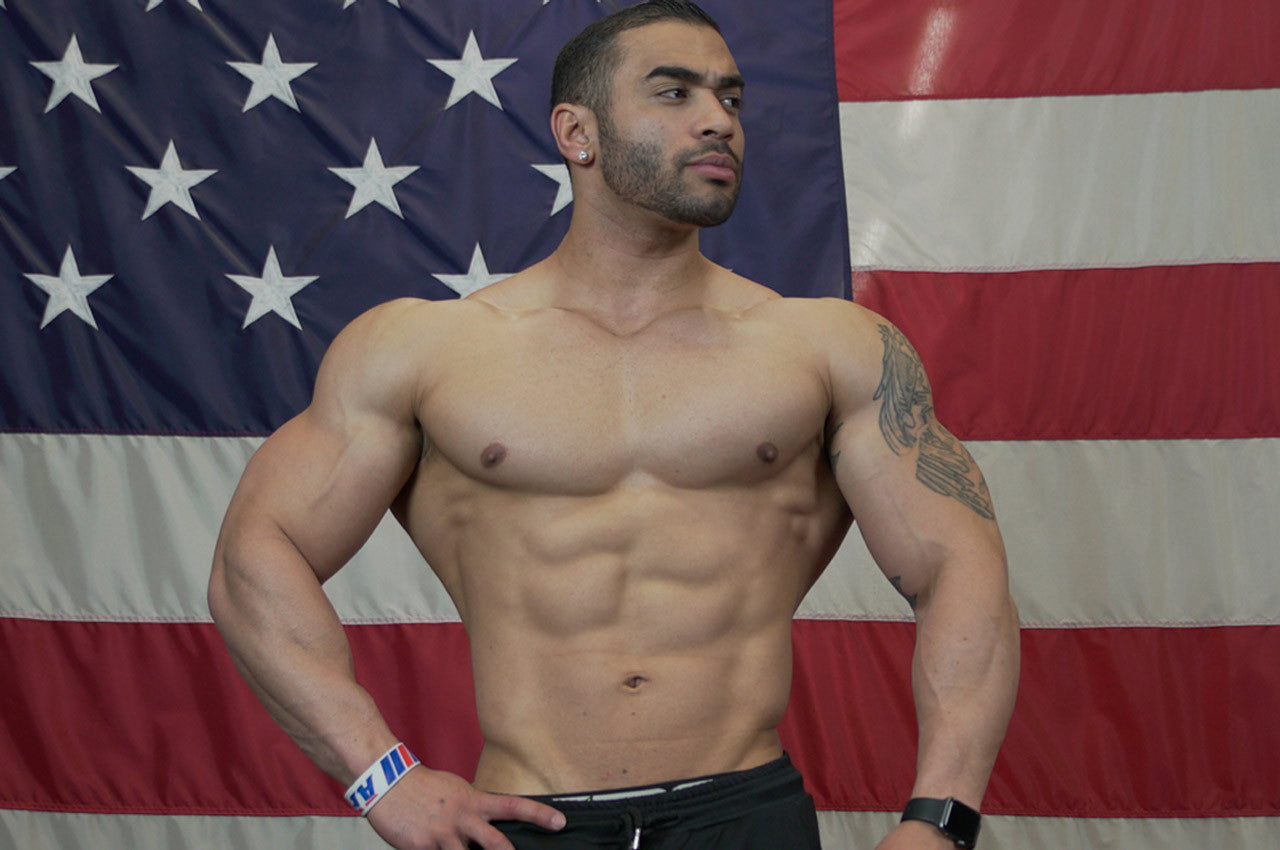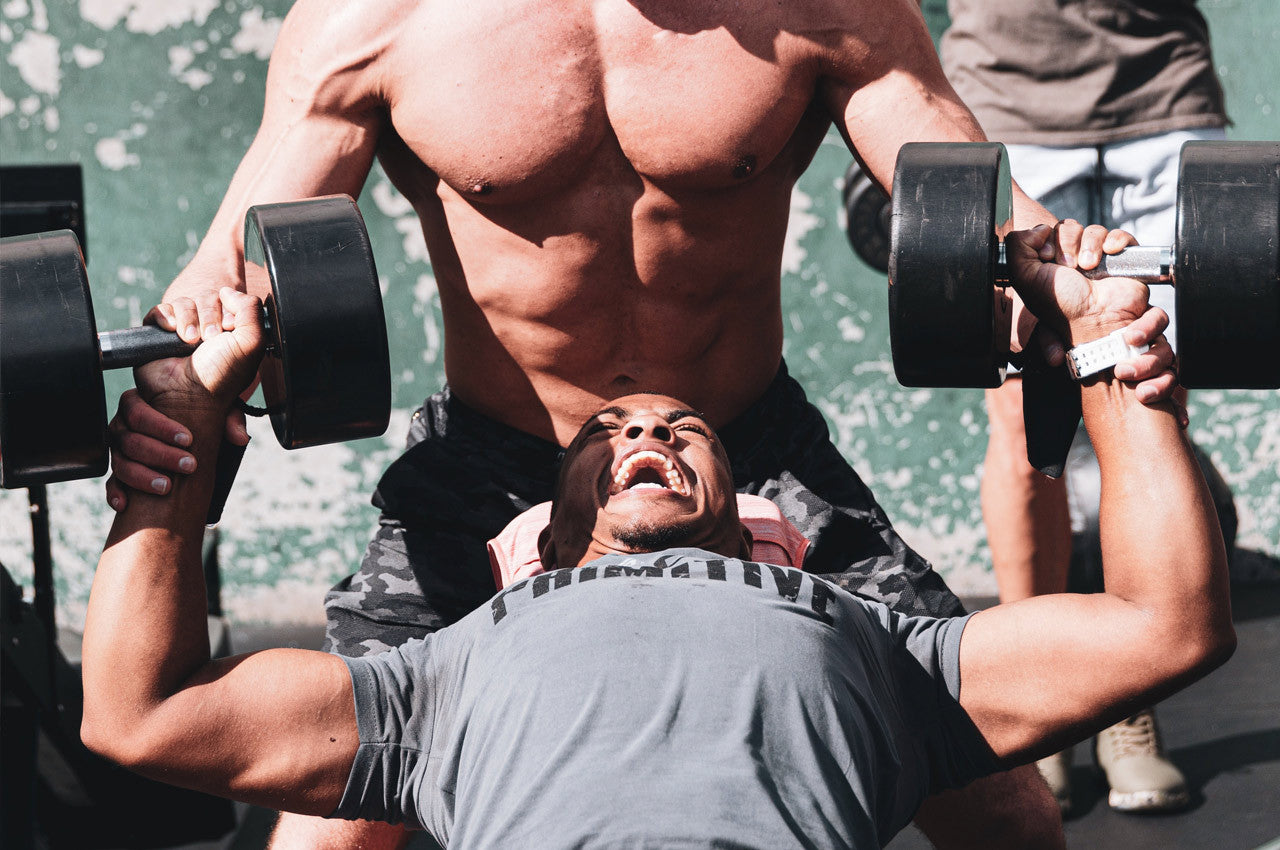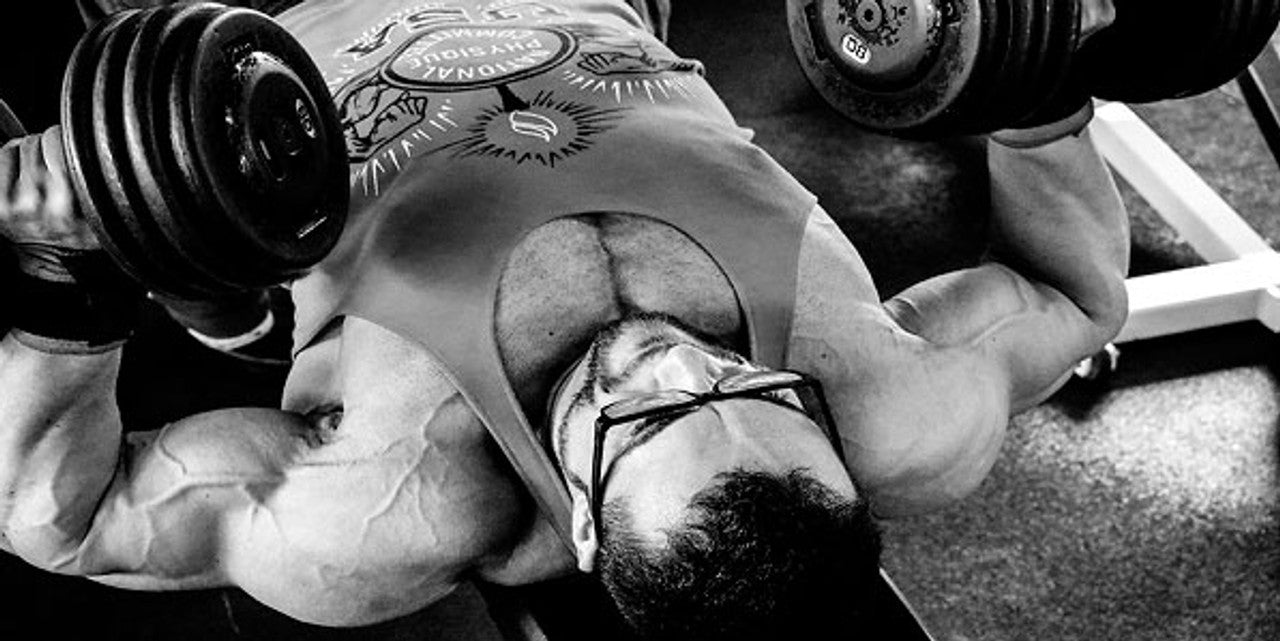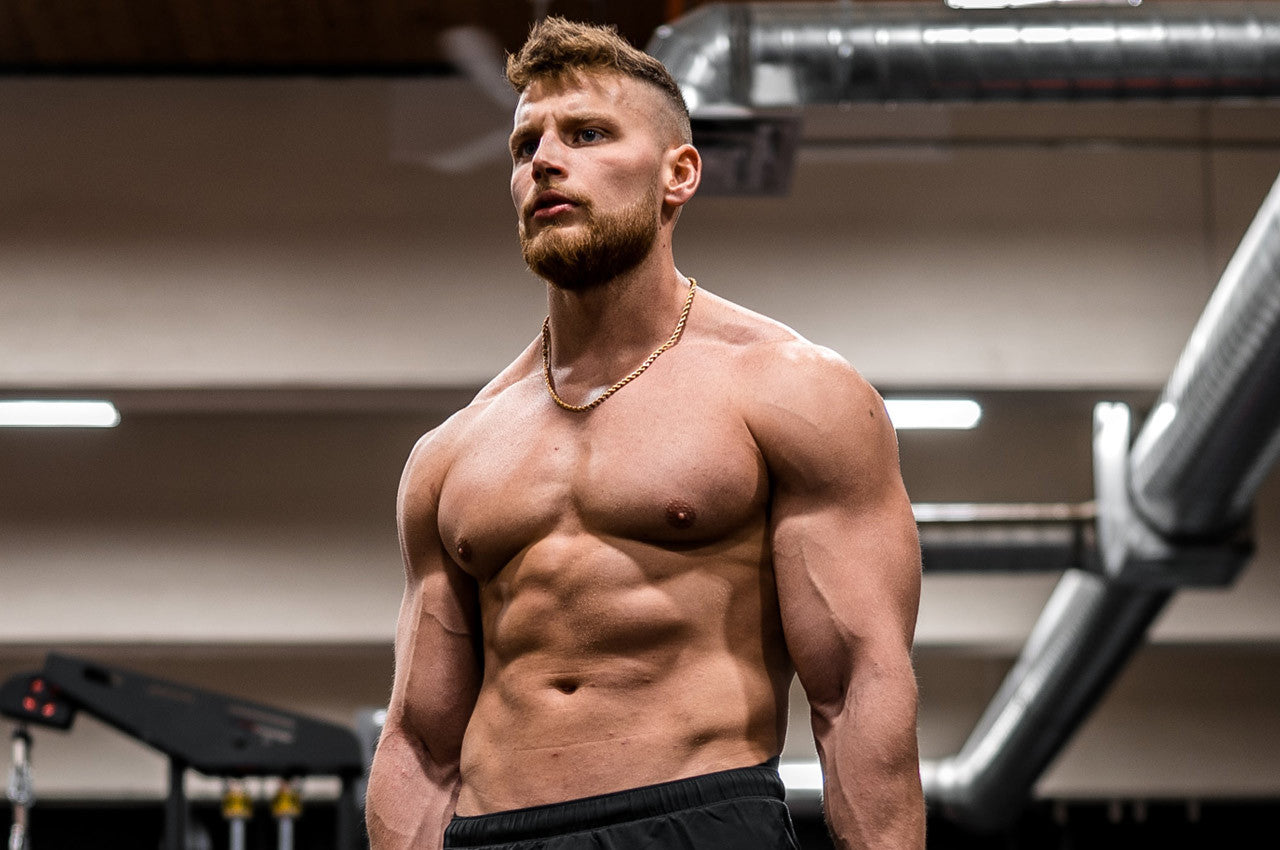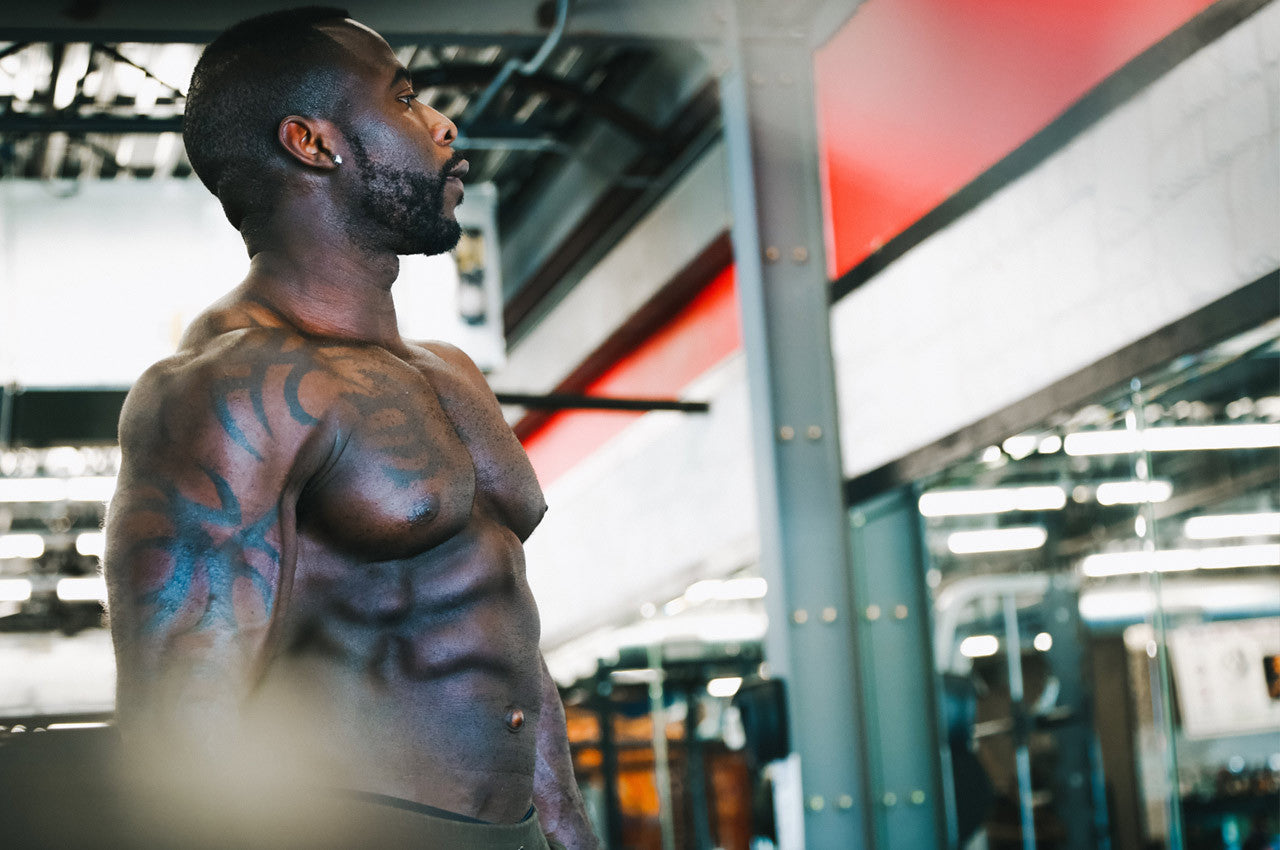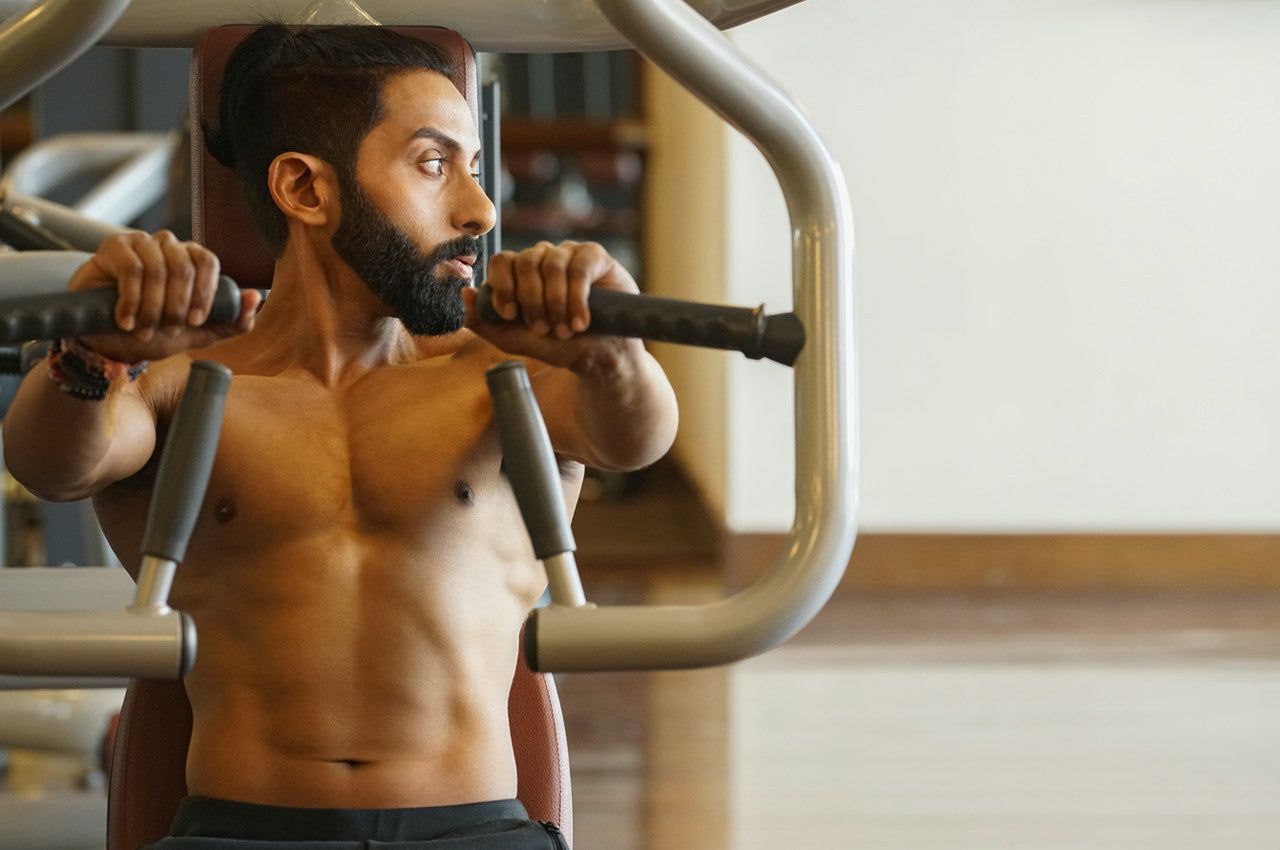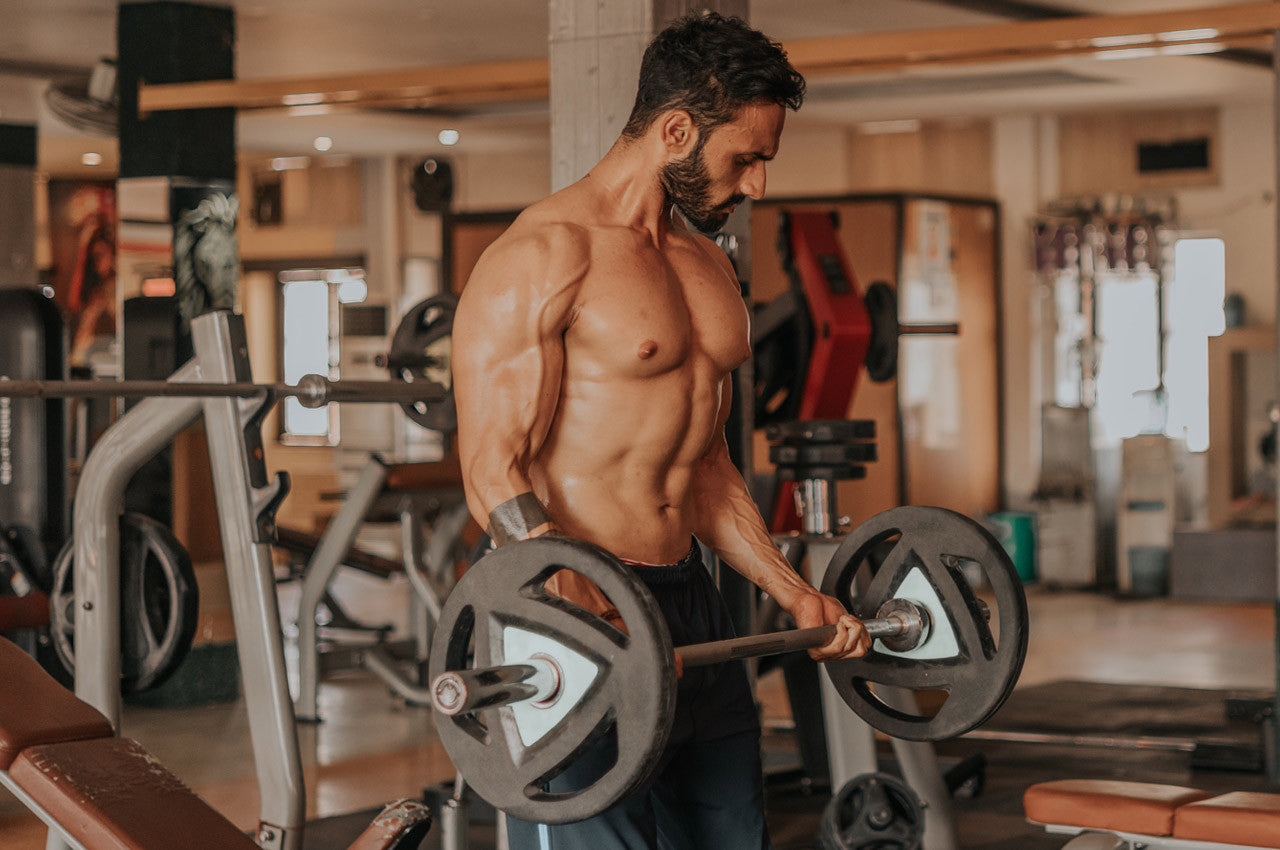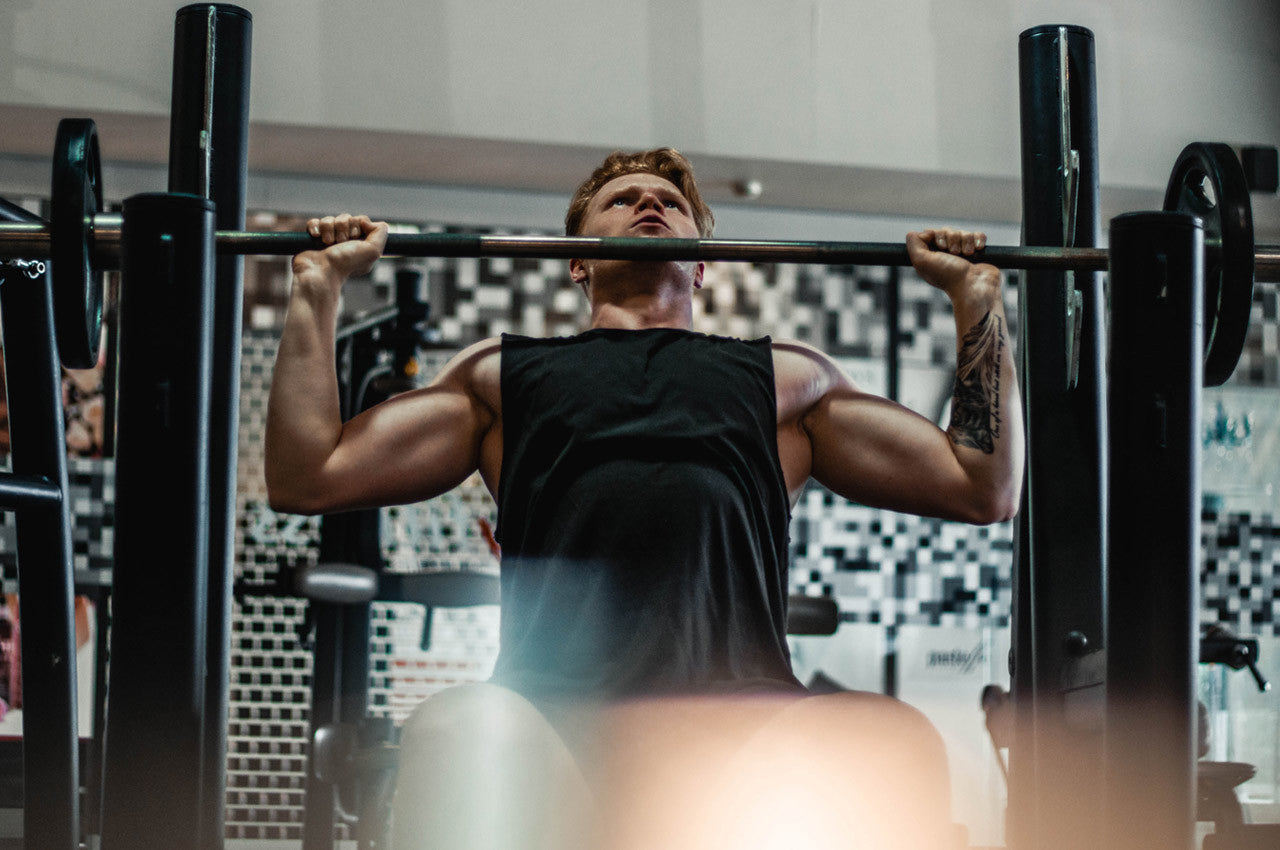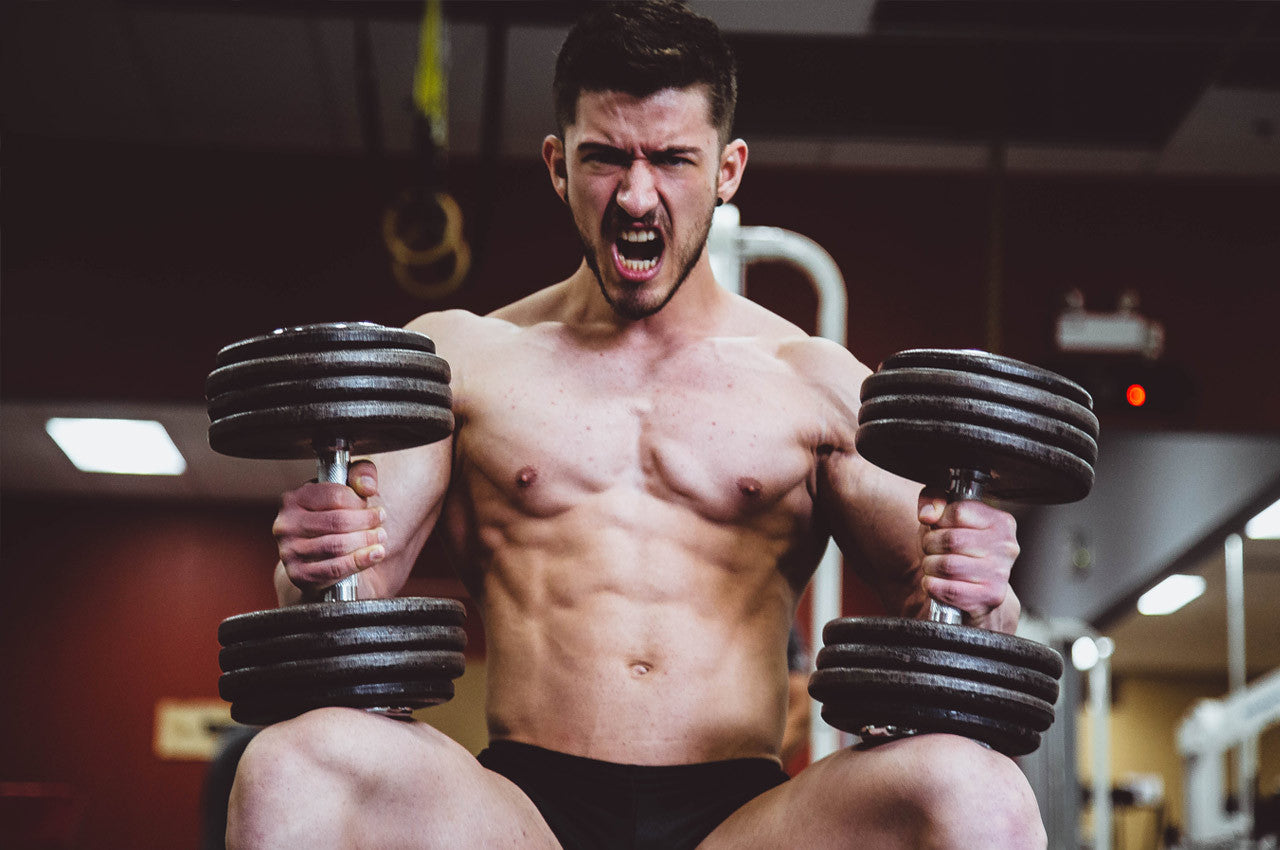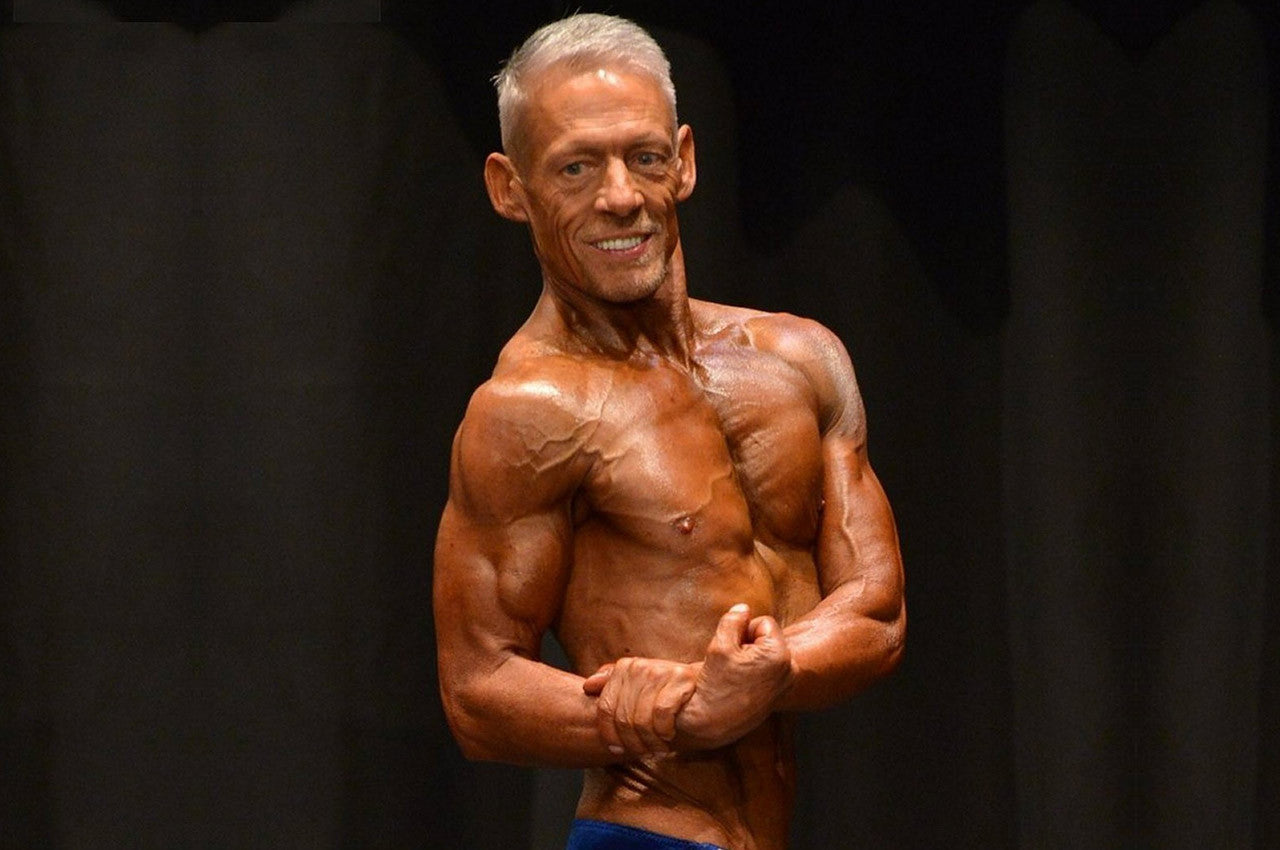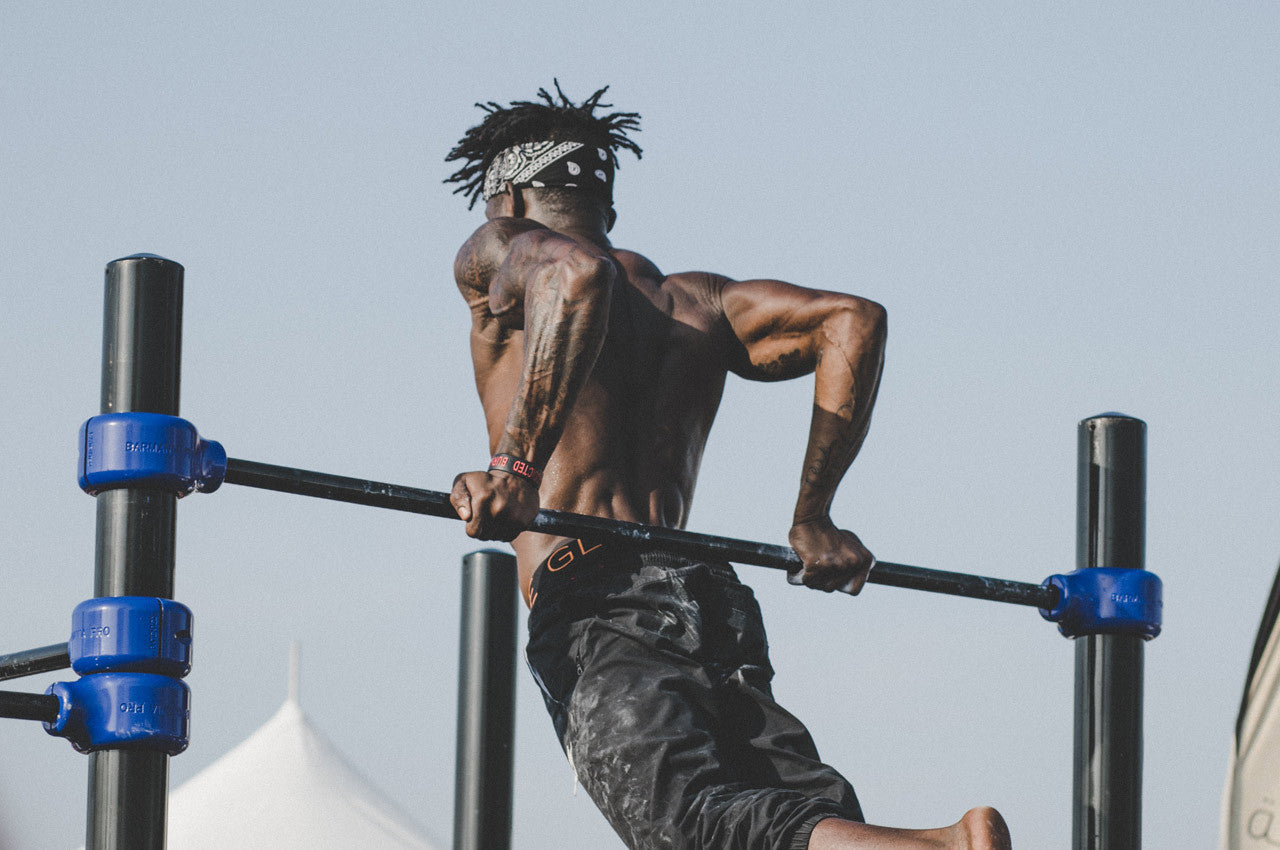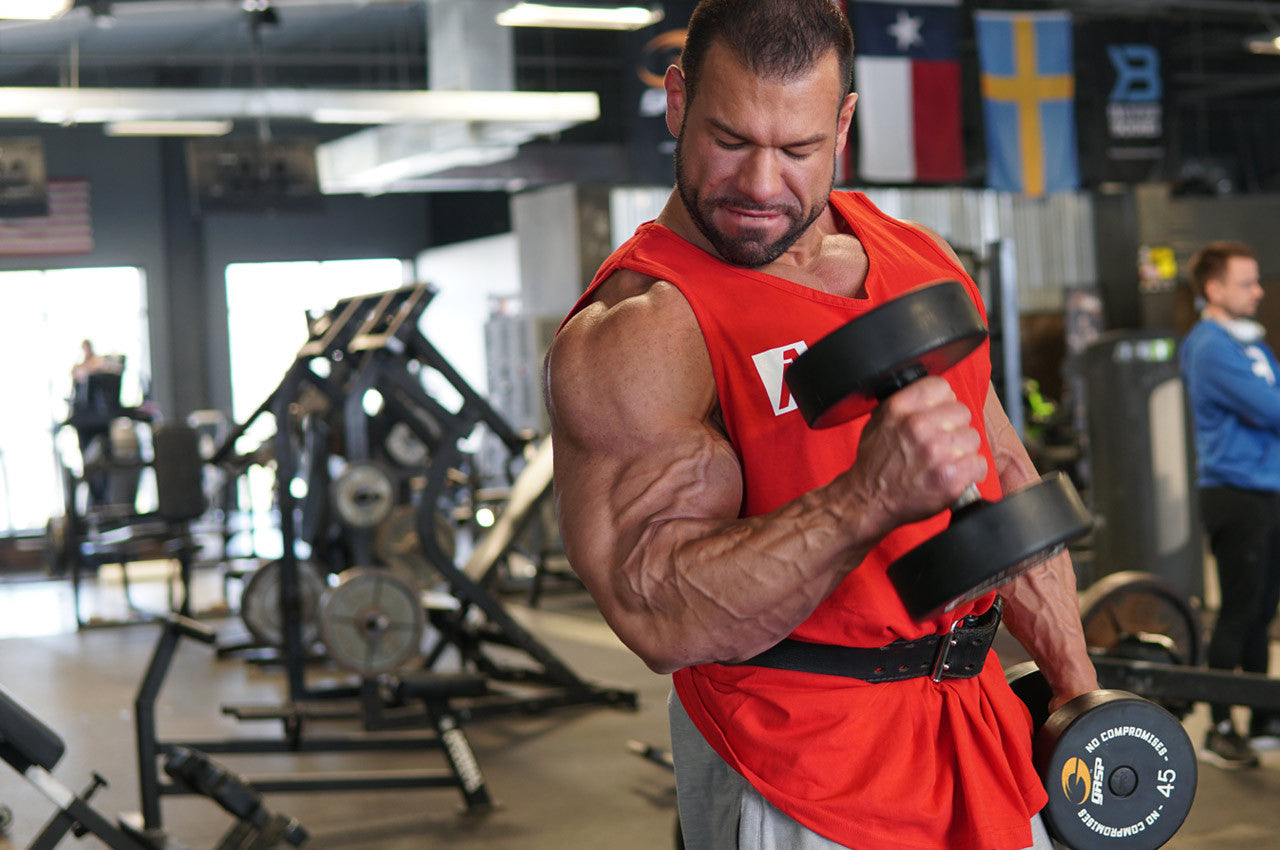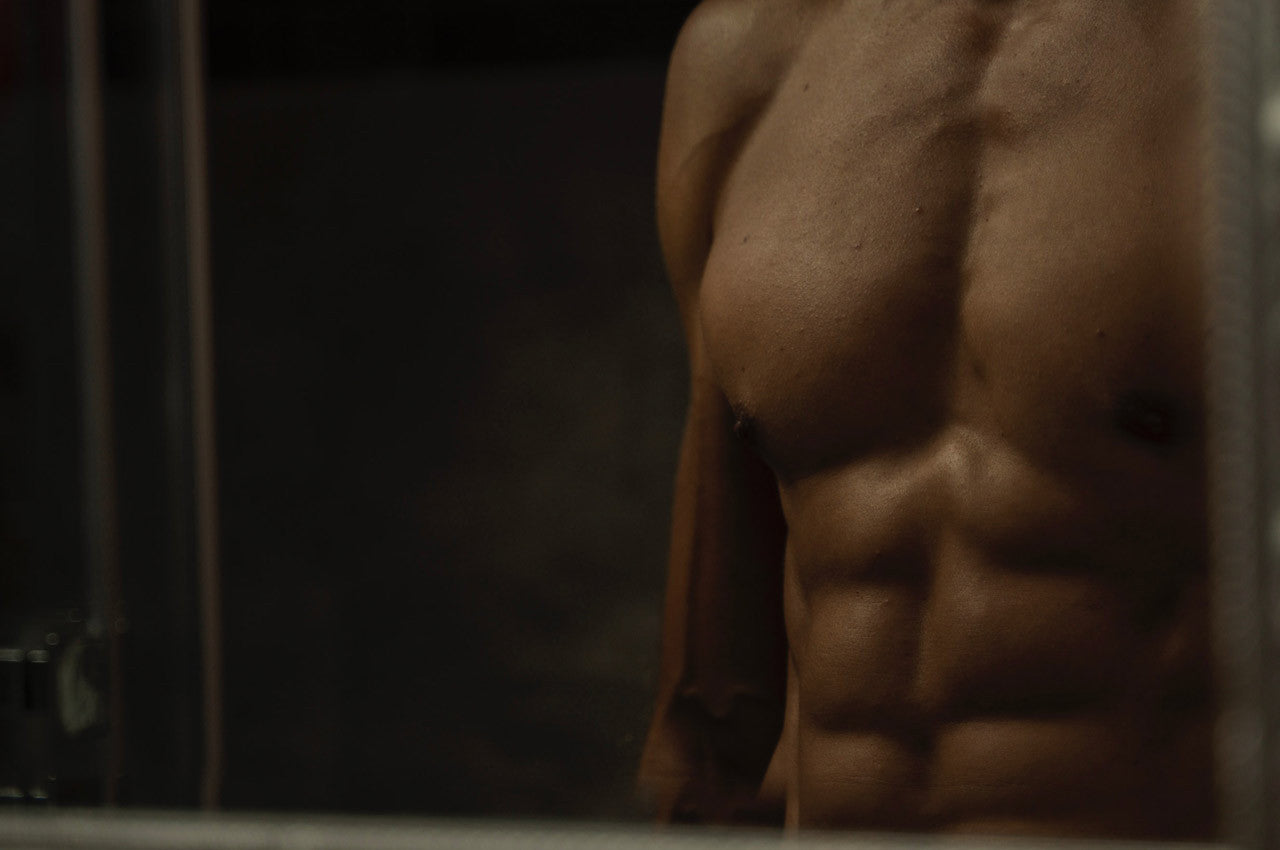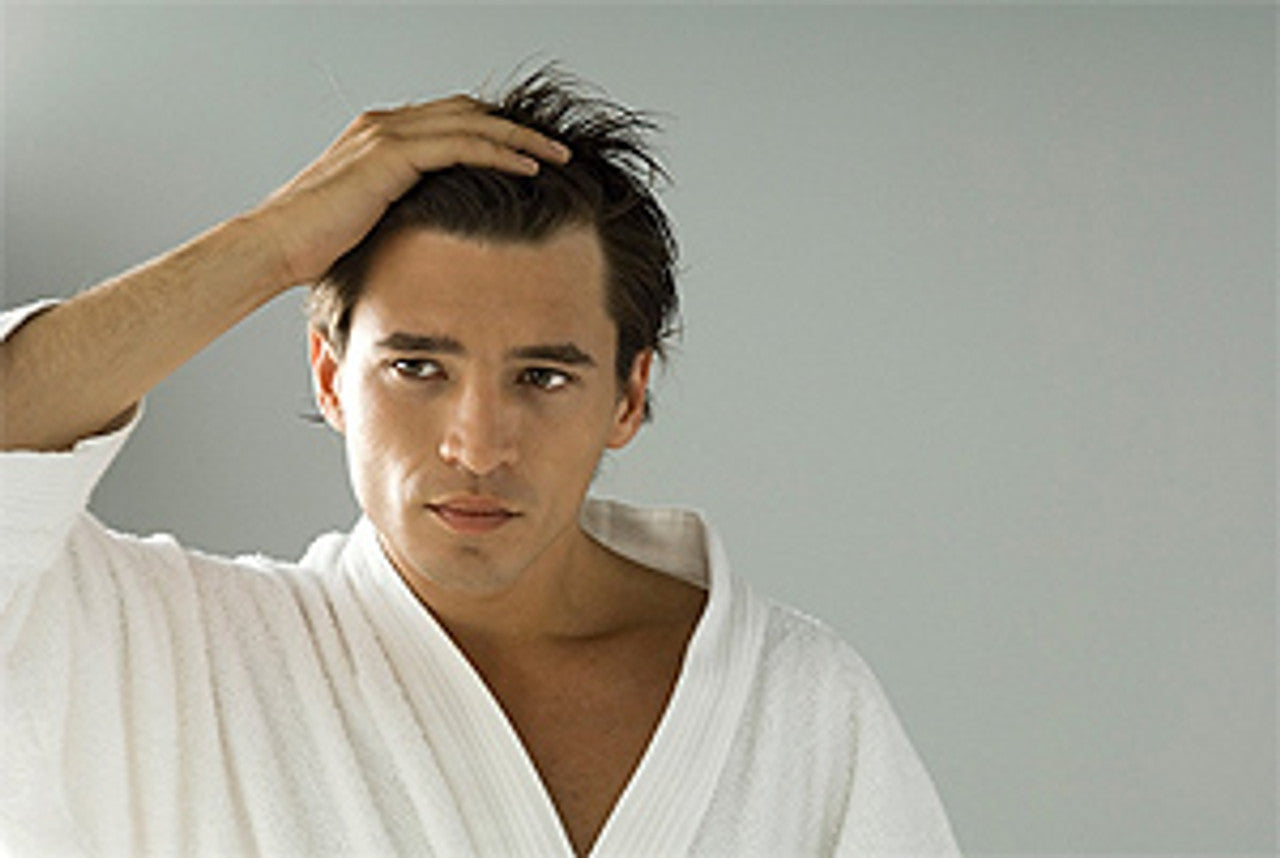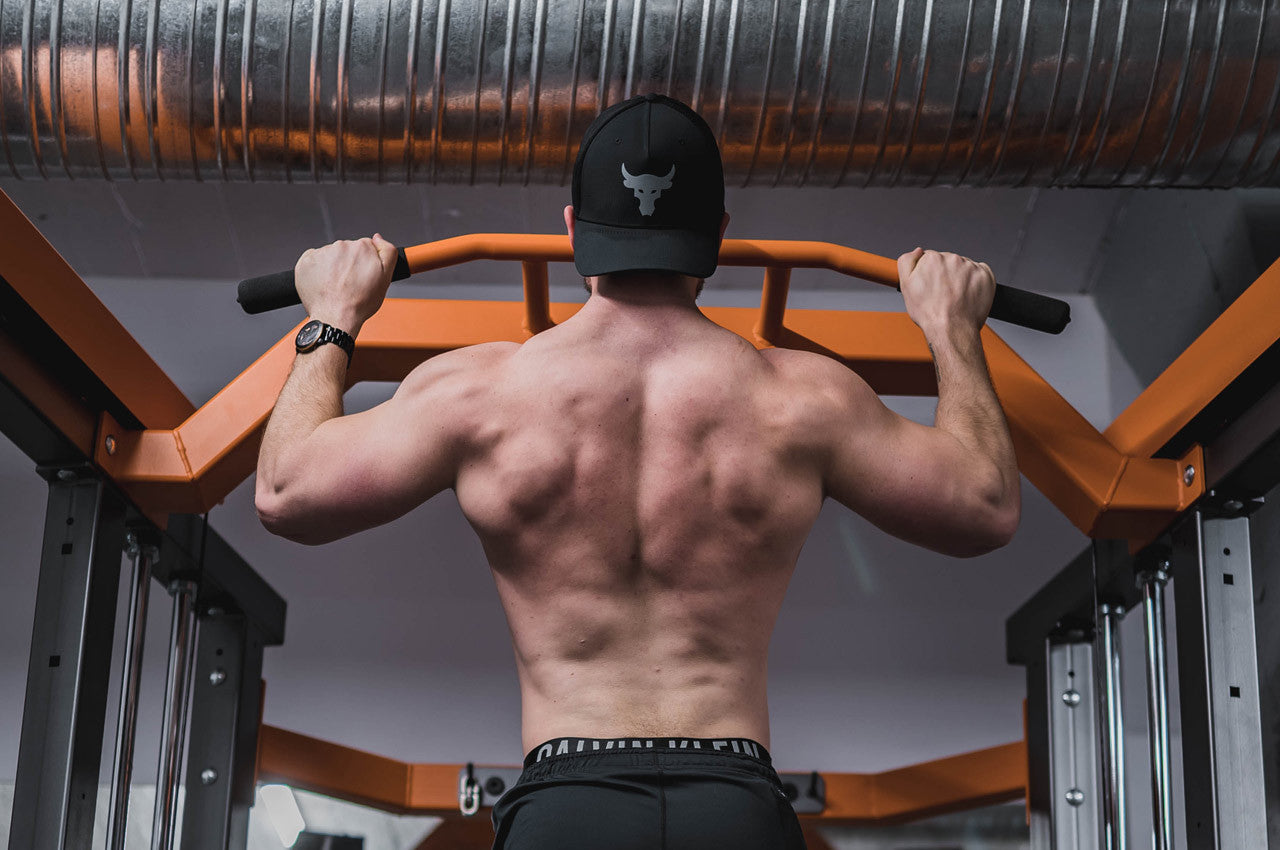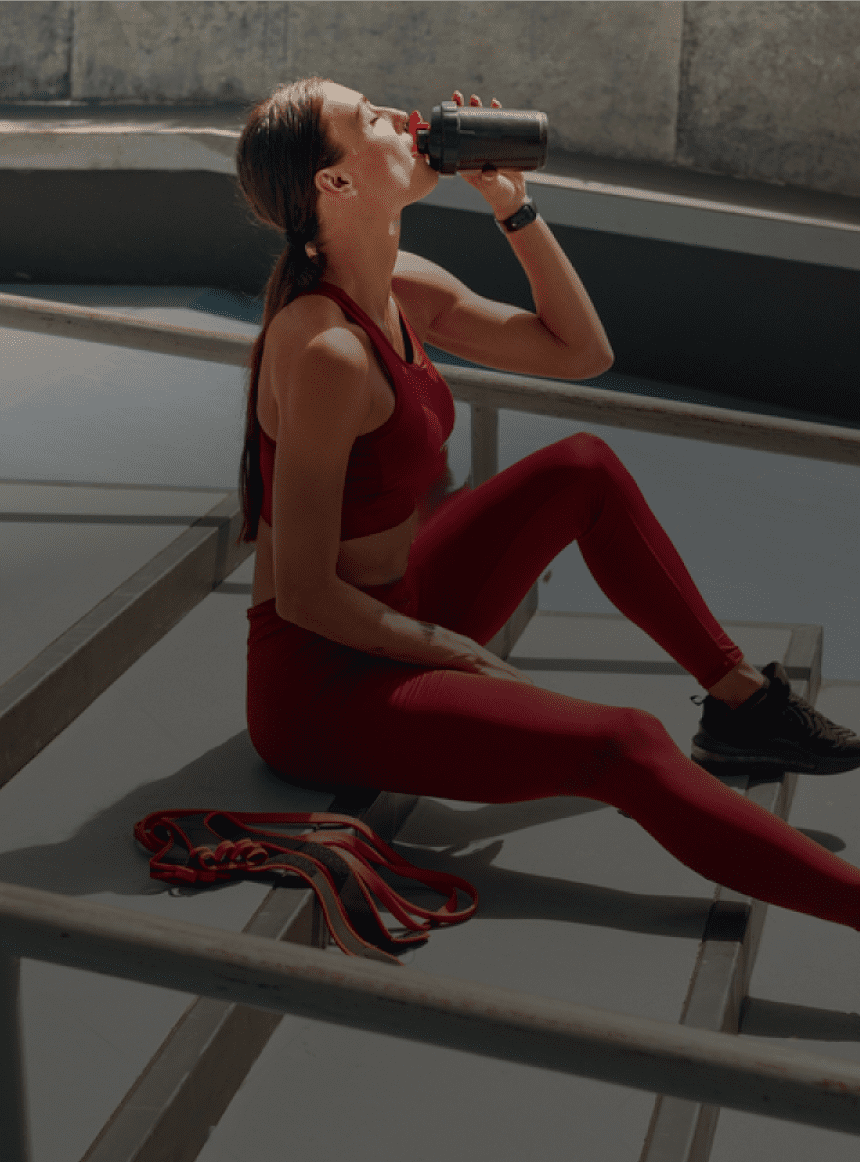Here is a ranking of the best exercises for building a better chest based on personal experience and the training articles of top IFBB pro bodybuilders. This is not necessarily a determination of exercise order, but the exercises that are most effective for muscle fiber recruitment and targeting the muscle group itself. Exercise order will always be determined by the stabilization requirement of the secondary muscle groups. Isolation exercises, while they may target muscle groups specifically; should still be performed later in the workout.
10. Decline bench press (dumbbells and flyes)
Coming in at #10 are the decline pressing and fly movements. They were popular because many lifters were under the impression that the movement could increase the thickness in their lower chest and make it look like their chest was “hanging” lower. However, if you look at the training regimens of guys like Arnold and top pros today who have great lower peck development; it really had nothing to do with decline movements. For the most part, the “shape” of your pectorals is determined by genetics, so if you skim through the training articles of competitive bodybuilders this movement won’t be anywhere to be found. It may still be useful for adding fullness to your lower pectorals. Also, in sports specific applications of weightlifting, the decline bench is omitted.
9. Dumbbell pullover
The dumbbell pullover is an exercise that had gained much popularity a few years ago with bodybuilders who were being trained by old school guru’s. However, today it is a movement which is absent from the routines of many top bodybuilders with a great chest. There were many theories behind it’s effectiveness which included expanding the rib cage and therefore providing more surface area to add chest muscle; and adding chest fullness. The area widely considered to be the most important for increasing the appearance of fullness however is that of the upper pectorals. The most effective use of the dumbbell pullover is as a finishing movement for adding fullness to every part of your lower pectorals, and working your serratus anterior.
8. Incline Dumbbell flyes
This is a very popular finishing movement for the upper pectorals with pro bodybuilders but is not seen as much with recreational bodybuilders. It targets the upper chest area which is most responsible for increasing the appearance of fullness in the upper chest. However, it is a “fly” movement that targets a small area of the chest and puts more tension on the rotator cuffs than the flat bench fly. It is very easy to miss the target area of the upper chest with this movement which is why it falls behind #7 which is the upper pec cable crossovers. It is still a great finishing movement for developing the upper pectoral area all the way across. However, the risk of injury is high and it is very easy to miss the target area.
7. Upper Pec cable crossovers
The upper pec cable crossover is not a movement that can provide as much of a load on your upper pecs as the incline dumbbell fly but it hits the inside of your upper pecs every time and easily provides a pump for that area. This makes it a great finishing movement for those targeting their upper chest and it’s easy to play with the sets and reps because of the almost non-existent injury risk. The key thing to remember with this movement is to not lift with your biceps. The most common mistake is made by those who end up with a larger pump in their biceps than in their chest. Always remember to extend your arms out in front of you and lock your elbows to keep the focus on your pecs
6. Dumbbell flyes
The dumbbell flyes are coming in at #6 behind the cable crossovers for one major reason; which is the inability to increase the time under tension for this exercise. Time under tension in bodybuilding has become increasingly important because of the increase in IGF-1 associated with it, and the muscle fiber recruitment that comes with it. To decrease the speed with which the dumbbell fly is executed would mean increasing the load on the rotator cuff which would cause you to fatigue before your pectorals have been adequately worked.
5. Cable crossovers
The cable crossovers are coming in at #5 because of the ease with which you can slow down the movement speed and directly target the pectorals during exercise. The key with this movement is to keep your pecs under tension and to squeeze everything you can out of every rap. The only real hassle with this movement is waiting on getting both cables to work with if you’re in a crowded gym. Another great thing about this movement is the ability to vary the angle with which you perform your crossovers so that you can hit the outer pecs or the lower pecs.
4. Dumbbell bench/incline
The dumbbell work for your chest is excellent because of the lack of load on the triceps and the ability to balance out your strength on your right and left side. Dumbbell presses are always highly recommended for those who have issues balancing a barbell. You won’t be able to lift as much weight with dumbbells however because of the balancing requirement this movement entails. In the end, the standard bench press is still ideal for increasing upper body strength.
3. Chest press machine/Smith machine bench press
This one may surprise of few people, the reason it’s coming in at number 3 is because of the direct tension on the pectorals and the freedom to control the speed of the movement without putting extra strain on your rotator cuffs or front delts. It lacks the ability to provide the total load on your upper body that leads to an increase in strength like the bench press. However the chest press is a popular finishing movement for many bodybuilders because they can contract and squeeze every last drop from their pecs and illicit an incredible pump like no other chest exercise can.
2. Barbell bench press
That’s right, the most popular movement of all-time for your chest is coming in at number three. As far as sports specific application and building upper body strength, the bench press is still king. Also, because it’s a heavy free weight movement, it will still be one of the first exercises you perform in your chest routine. The problem with the barbell bench press is that when people use it to supposedly build their chest they end up forcing up heavy weight and distributing much of the load on their triceps and anterior deltoids. Using weight that is easier to control and slowing down the movement is a great way to increase its effectiveness. It will be much easier to reduce the “lift as much weight as possible” mentality behind the bench press if it’s not the first movement in your routine.
1. Incline Smith Machine/Barbell press
As discussed earlier in this article, the best way to increase the appearance of fullness in your pectorals is the incline barbell press. However, this is not to say that doing the incline bench press alone will improve your chest. This movement is number one on the list because once you’ve reached a plateau in your chest development; this is the movement that is focused on to continue development. If you look at the routines of many pro bodybuilders you will see this listed as the first movement in many of their routines. However, that is not to say that great pectorals have all been built by doing the incline movement first. Genetics plays a large role in the development of different muscle groups and there are still bodybuilders who believe in focusing on the chest as a whole and not dividing it into different parts during a routine.
Conclusion
As stated in the opening, this is a ranking of the best movements for chest and it is not necessarily a determination of exercise order (although many bodybuilders use the incline press first, and the fat bench second). It is based on the most popular/effective movements for providing improvements in the pectorals.
Everyone is different, the best way to find what personally improves your chest development is to start with a routine that incorporates the basics and then experiment with more advanced routines to break plateaus. When doing free weight pressing movements just remember not to get caught up in the numbers game.
Remember, bodybuilding is not about “how much you can lift” it’s about “how much you look like you can lift”. Using proper form and a proper lifting cadence will take your physique much farther than using weight that is too heavy for you just because your lifting partner did it.






